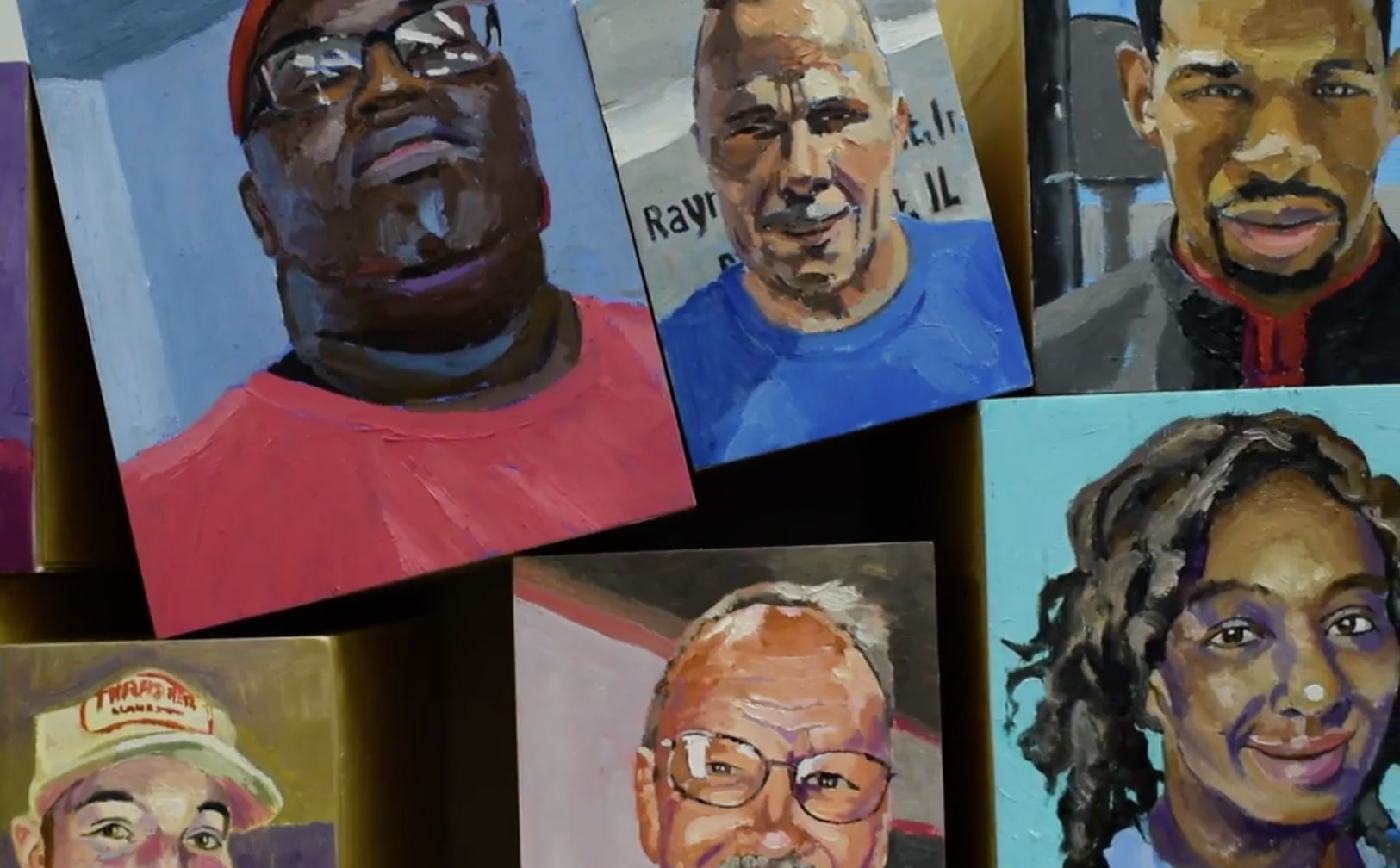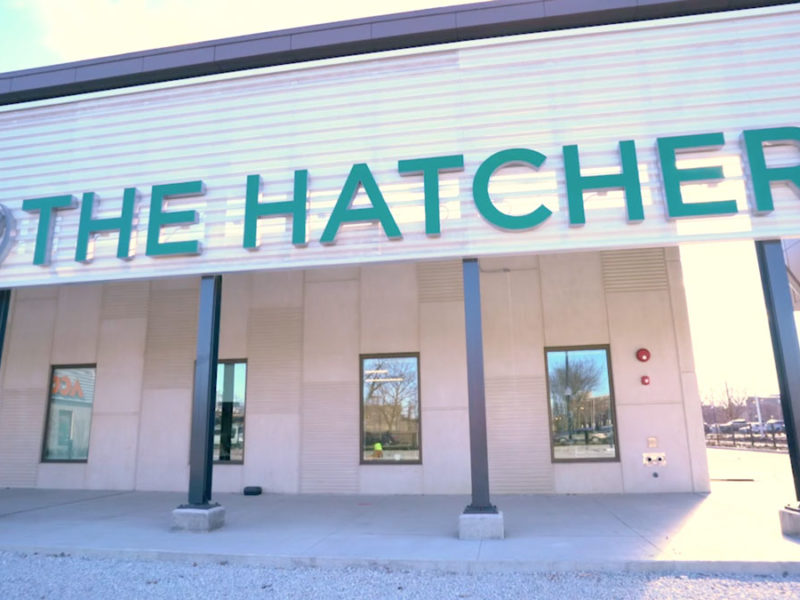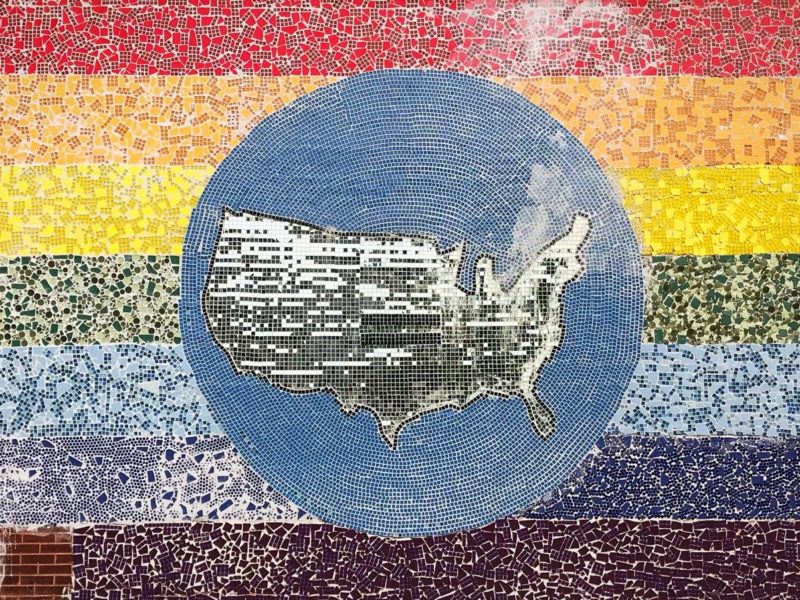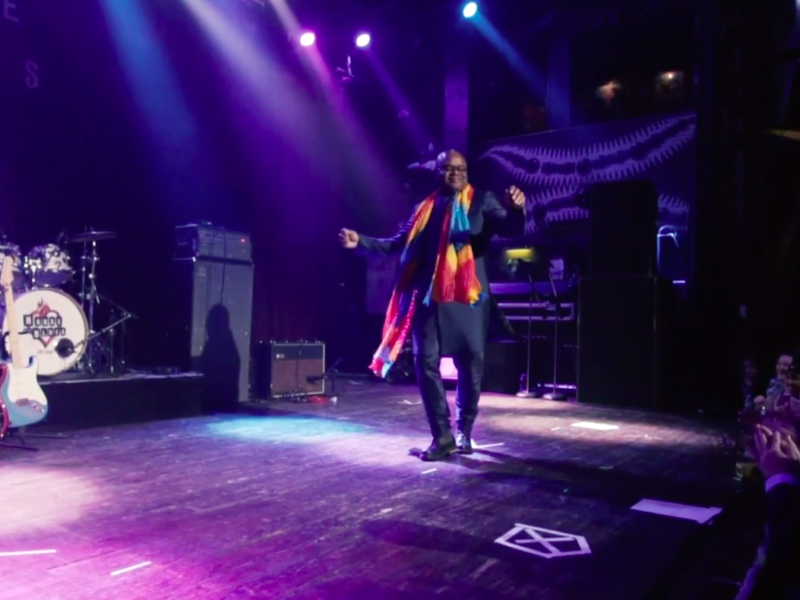
Crossing the Street: How Art on Sedgwick Fosters Community
COMMUNITY AREA #8: Near North Side — Art on Sedgwick
OLD TOWN — A few years back, Charlie Branda was living in Old Town when one morning between services at LaSalle Street Church, long-time Chicago artist John Bakker made a bee line over to her.
“Pardon me,” he said to her. “I heard your idea for an art center—and I’m in.”
With no formal arts training and only an abandoned storefront to work with, Branda took this enthusiasm from community members and transformed it into what is now an Old Town institution. Art on Sedgwick engages thousands of people a year at its location just south of North Avenue in the historic Near North Side neighborhood. The organization creates spaces that allow local residents to experience the collective effervescence of art and imagine a more inclusive future together.
We sat down with Branda to talk about Art on Sedgwick, what makes its work important, and the potential it has to forge bonds across Chicago.
Chicago Ideas: What was the inspiration behind Art on Sedgwick, and what was the tipping point that made it happen?
Charlie Branda: I settled in the Old Town area while attending grad school at the University of Chicago. The location, architecture, and history here all called out to me—and I especially liked that mixed income and affordable housing developments were structured into a high-demand market. It appealed to my sense of fairness.
Over time, though, I felt a growing discomfort with the disconnection between different parts of the community. People on opposite sides of Sedgwick Street—whose feet touched the same pavement each day—were experiencing the same space in vastly different ways.
In January of 2013, I was reading Bill Strickland’s book, Make the Impossible Possible and was struck by his story about how a ceramics class in high school transformed his imagination. As he honed his craft, he discovered that sometimes, with nothing but mud and imagination, he could create something so beautiful that it felt like a miracle. That experience completely changed what he believed was possible.
That same month, as these ideas were sinking in, there was a shooting across the street from my house and a young father lost his life. Tragedies like this had happened a few times before. It felt familiar—perhaps even inevitable. But was it really? What if there were possibilities we hadn’t yet imagined? What if we decided collectively that the way it is now isn’t the way it has to be going forward.
That’s when an unshakable vision for what is now Art on Sedgwick struck me.
There were empty storefronts in the Marshall Field Garden Apartment Homes across the street and I couldn’t stop imagining a welcoming art space there—where neighbors living in separate worlds could begin to connect, create, and imagine new possibilities together.
CI: What is the benefit of easily accessible art education and artistic outlets?
CB: By definition, creation is the opposite of destruction. Art is intrinsically generative, and it helps us connect with the best part of ourselves. Art reminds us that life is short, hard, complicated, and beautiful. Art is a way to push back against voices that try to convince us that we’re either more or less valuable than the rest of humanity. Art reminds us of our agency. Art reminds us that we are free. On a community level, engaging more people in art results in more creative energy available to meet any challenge that faces us.
CI: Chicago is one of the most segregated major cities in the U.S. How can art—and Art on Sedgwick especially—work as an equalizer?
CB: I think what’s interesting is even in an area where we’ve worked so hard to make it integrated, people still act like it’s segregated. The students who live in affordable housing are the only students who go to the neighborhood schools. And most of the people who live in vastly different worlds on opposite sides of Sedgwick Street are enjoying the community in different ways.
So where Art on Sedgwick comes in is saying, “Let’s use art to build community.”
The first thing we did was use art to make a welcoming space. We occupied a space that had been unoccupied for over a decade and we made it a welcoming space where everyone could come. And then we have been active in the neighborhood using whatever relationships we have with schools to get students who aren’t normally interacting (because they attend different schools) interacting. We’re using art to create those connections.
Art is important in that way. It gives people a voice. It reminds them of their agency. It has a way of connecting you with the most important part of who you are. In that place you’re creating something, and if you learn it well you’re creating something beautiful. People respond to beauty. They can’t help it. People react to beauty at a cellular level. It opens them up a little bit. And once you start creating those connections and building relationships, people begin to care for each other. They’re automatically considering another person and other people in their vision for what the neighborhood needs to be in the future.
CI: What is your favorite memory or success story from Art on Sedgwick?
CB: One time in our first storefront (which is right across the street), I was cleaning up after a meeting, and I saw a mom and a toddler outside the window, just sort of staring into our space looking sad. I went out to say hello to her and waved her in. She had tears in her eyes and she said, “I’m looking at your artwork, and I’m so sad, a friend of mine committed suicide two weeks ago, but when I see your art it gives me hope.” That was one happy little thing—it was very small—but I felt like our presence, and having artwork that appealed to our humanity and our shared humanity, gave someone hope. I think that it can do that.
CI: What does community mean to you?
CB: To me community is when a group of people who have something in common—in our case it’s shared geography; it’s the ground we all live on—activate their collective strength and limits and come together to be more together than they were separately. They work towards a common goal and the common good.
CI: How can others find you and get involved?
CB: Look on our website! We have events you can track. We’re on social media (we’re most active on Facebook and Instagram). People can stop by our location at 1408 N. Sedgwick. Or you can email me at charlie@artonsedgwick.com. Check out the short video made by Martha Irvine of the Associated Press below for a little more about Art on Sedgwick and the Old Town neighborhood.
The 77 Project is a storytelling and media project presented in partnership with Xfinity with additional support from Robert Wood Johnson Foundation to help redefine the narrative of our neighborhoods from the inside out. We’ll spend the remainder of 2018 shining a light on organizations and individuals in each of the 77 community areas of Chicago who are making a positive impact. Know someone we should speak with? Recommend them here.




